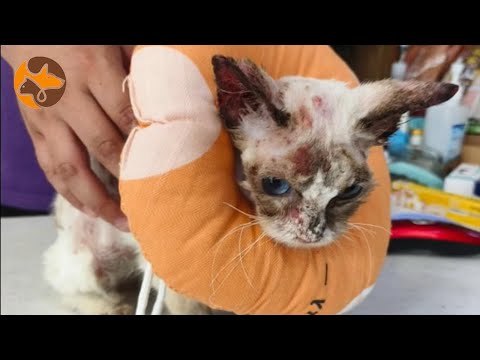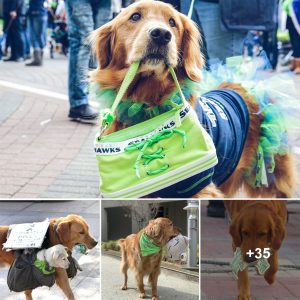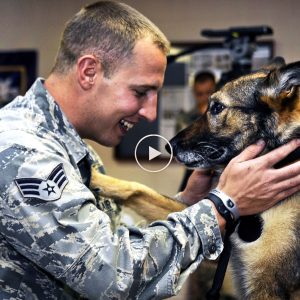In the realm of compassionate endeavors, a narrative unfolds—a tale marked by the pursuit of hope in the face of adversity. The story commences with the urgent mission of saving a severely injured cat, its neck bearing the burden of damage. As the rescue unfolds, a looming question hangs in the air—can this feline, in the grip of injury and vulnerability, reclaim the vitality it once possessed?
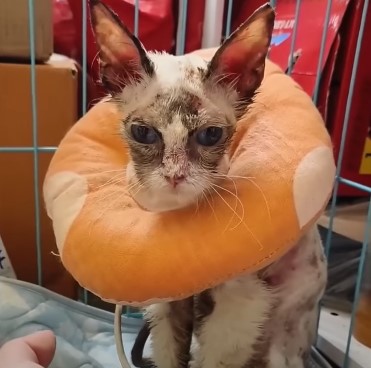
The scene is set with the gravity of the cat’s condition, its neck serving as a poignant symbol of the challenges that lie ahead. The rescue, fueled by empathy and a determination to alleviate suffering, becomes a beacon of light in the shadowed landscape of the cat’s ordeal. The journey to save this feline, with its compromised neck, becomes a collective endeavor, where the hope for recovery is intertwined with the unwavering commitment to extend a lifeline to a creature in need.
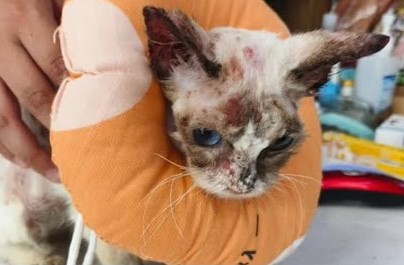
As the narrative unfolds, the central question resonates—can this cat, with a neck marked by injury, embark on a path of healing? The answer remains shrouded in the uncertainty that accompanies every tale of rescue. The damaged neck becomes a metaphor for the trials and tribulations that the feline must confront, a physical manifestation of the hurdles that stand between its current state and the prospect of restored well-being.
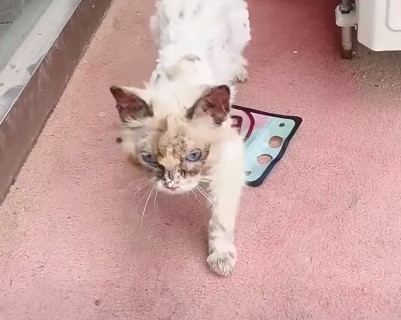
The narrative is not merely a chronicle of physical healing but an exploration of resilience, both in the cat’s spirit and the collective efforts of those involved in its rescue. The damaged neck, though emblematic of struggle, becomes a canvas on which the strokes of hope and compassion are painted. The question of recovery extends beyond the physical realm, delving into the emotional and spiritual dimensions that shape the cat’s journey toward well-being.
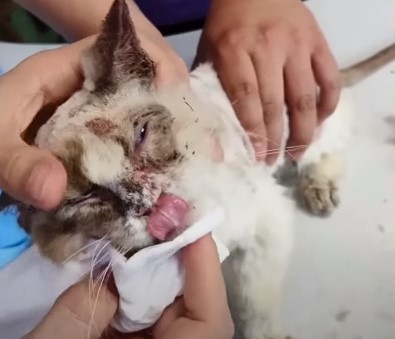
In the conclusion of this narrative, the fate of the injured cat hangs in the delicate balance between adversity and the human capacity for kindness. The story becomes a testament to the transformative power of compassion—the belief that, even in the face of a compromised neck, the potential for recovery is nurtured by the collective heartbeat of those who choose to extend a helping hand.

In the end, the question lingers, suspended in the narrative’s final moments—can the cat, with its damaged neck, reclaim a life of vitality and joy? The answer remains uncertain, echoing the unpredictability of life’s journeys, yet the narrative stands as a testament to the enduring spirit of hope that accompanies every endeavor to save and heal a life in need.
